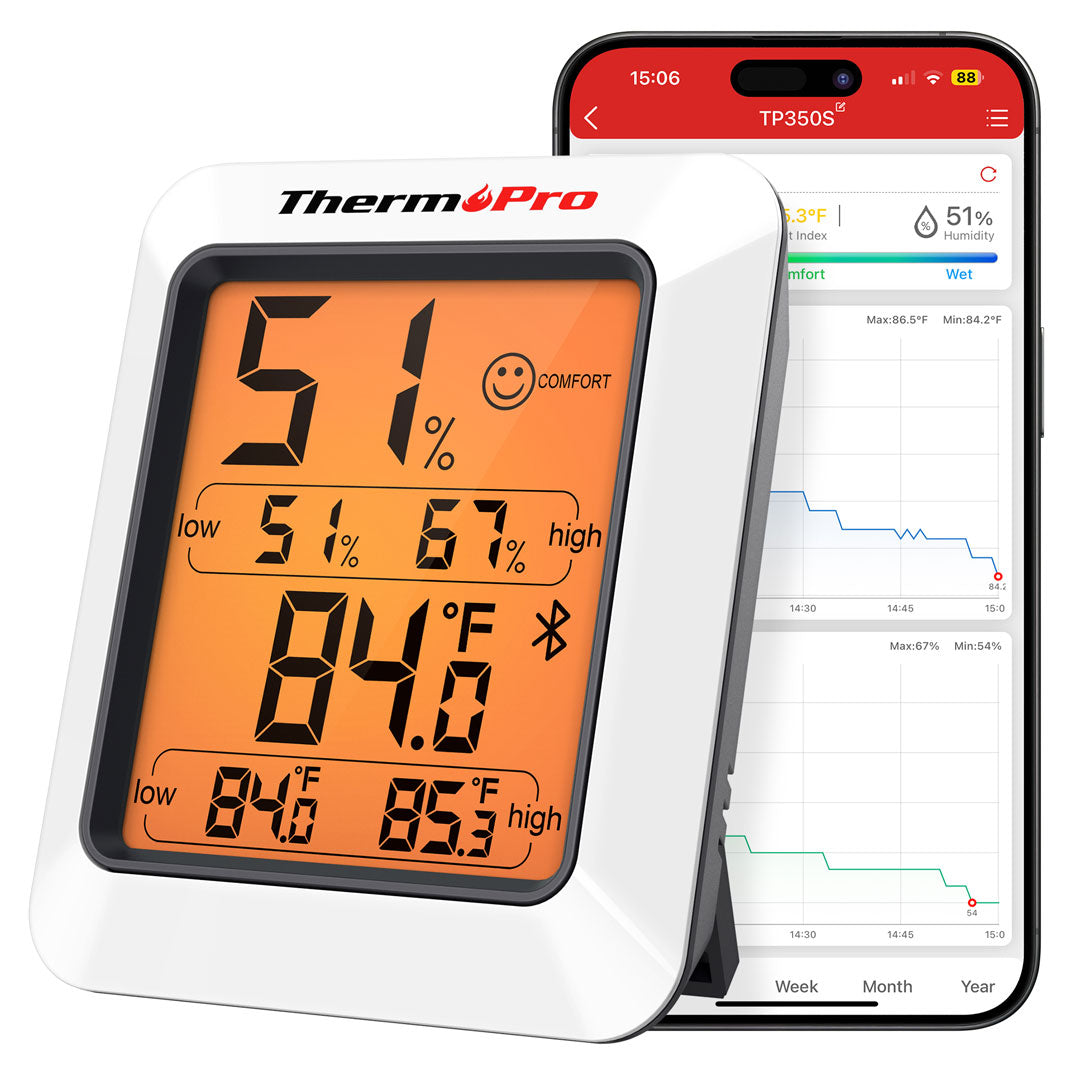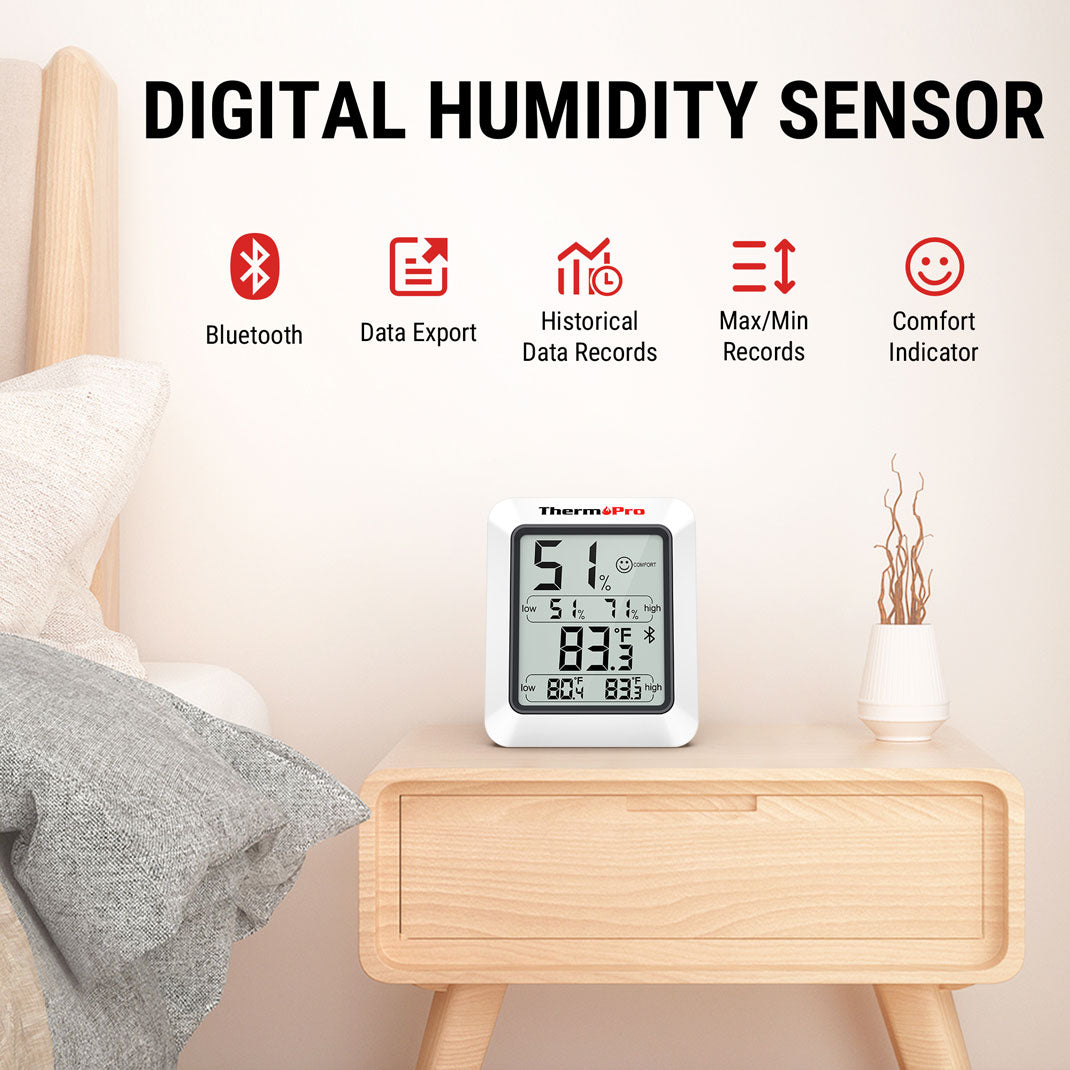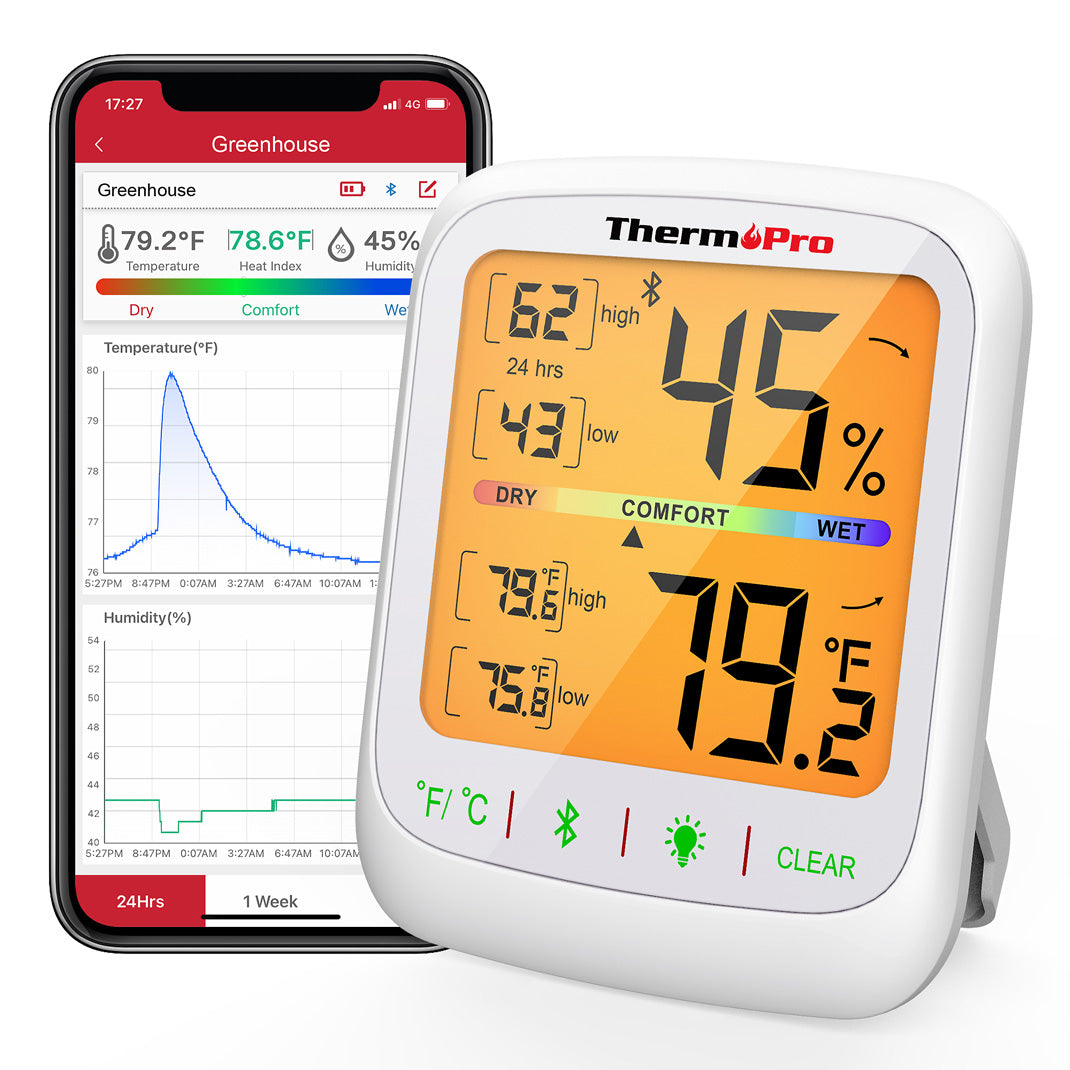How can you tell if your home is at the ideal indoor humidity in summer?
A device called a hygrometer is used to provide a digital reading of how humid your home is. It also has other features, such as giving you the temperature. For best results, try ThermoPro Indoor Hygrometers, such as the TP357 Digital Hygrometer to get an accurate reading every time. Other types of thermometers and AC units can give you this information as well.

What is ideal summer indoor humidity?
If you don’t have a device to tell you exactly what the humidity is, you can always tell by how you feel when you’re inside your home.
It should be low enough so that the air doesn’t feel thick and frizz your hair. Simply put, if the air in your home is too humid, you’ll know it by feeling it.
Why is the humidity higher during the summer?

Humidity levels are always higher in the summer. We usually associate humidity with hot weather and the summer months. Why is this? Ultimately, humidity is higher in the summer because warm air holds more moisture. In fact, air that is 68 degrees can hold 10 times more water than air that is only 32 degrees. When outside air reaches its full capacity for moisture, it starts to rain to purge its excess moisture.
Since warmer air can carry more water, it can hold more moisture. This is what makes the air feel physically thicker. Under this heaviness, physical activity can feel more difficult. You will also start to sweat extraordinarily quickly. If you want to avoid outside humidity during the summer, it’s best to go outside later in the day. Humidity is at its peak in the morning. People who wake up and go for a run in the morning might want to consider going after work or after dinner instead.
How to reduce humidity in house in summer?
It’s one thing to understand that there is humidity in your home; it’s another thing to do something about it. When you know how to reduce summer humidity in your home, you and your family will become a lot happier and healthier.
Here are just some of the ways you can reduce summer humidity in your home:
1. Buy a dehumidifier
The most obvious way to get the moisture out of your home’s air is to use a dehumidifier. This is a device specifically designed to extract water out of the air and reduce humidity.
Here’s how it works: Air goes through the refrigerated coils that collect the water. The water is then collected in an attached container. Once it gets full of water, you need to empty the container.
Be sure to put the humidifier in the areas of your home with the most moisture, such as the basement or bathroom. You may also put one in the living room or bedroom to give you the best air to breathe while you’re relaxing at home or sleeping.
2. Shorter, cooler showers
Taking a shower can contribute to the humidity in your home. A long, hot shower will put moisture into the air of your bathroom and can affect other parts of your home as well.
To reduce house humidity in summer, try taking shorter showers at a slightly cooler temperature. You should also have the bathroom well ventilated to help remove the moisture from your home.
3. Get fresh air
In some situations, your home may be more humid than it is outside. If that’s the case, open the window and let the fresh air come in. Not only will it help with circulation, but the less humid air will help with the high levels of humidity inside.
4. Use fans
Turn on fans to help move the air around your home. If the air is humid, spreading it around will help spread it out. Plus, the fan will help relieve sweating from the humid air. This is also great for when you only need to monitor the air in a small area.
5. Get rid of the plants
Plants can help make your home look and smell more pleasant. However, they can also increase the amount of moisture in the air as well. When a plant breathes in carbon dioxide, it releases water. That’s why you need to keep watering it. While they may look nice, you might want to keep the plants outside if you have a problem with the humidity levels in your home.
6. Insulation
Particularly if you live in an area with a lot of humidity outside, you should insulate your home well to prevent exterior moisture from getting inside. Insulation keeps outside air from getting in, and inside air from getting out. Certain building materials have higher insulation properties than others. It’s also important to insulate around windows and doors, where air can easily get in.
7. Be careful when using the sink
After you wash the dishes or brush your teeth, you can usually find water left on the counter. To prevent high levels of humidity in your home during the summer, it’s important to wipe it up to prevent it from getting into the air. Additionally, be sure to hang any towels appropriately to prevent any mold from growing.
Bonus Tip: Average Summer Humidity Map in the USA
We live in a large country with a large variety of weather. Different parts of the country are simply more humid than others. If you don’t like high humidity, you should move to a place that’s naturally dry. According to this average summer humidity map that shows humidity percentages by state, the states with the lowest humidity in summer are Colorado, Arizona, Idaho, and New Mexico. These low-humidity states are generally found in the American Southwest. This area is generally desert and is very dry.
On the other hand, you should avoid states with particularly high humidity. Georgia, Louisiana, Mississippi, New Hampshire, and Maine are the states with the most humidity. Most humid states during the summer are located in the American Southeast and Northeast. These states are stationed by the ocean, contributing to the wetness in their air.
These numbers reflect morning humidity percentages between 4 a.m. to 6 a.m. when humidity is at its highest. As the day goes on, humidity levels drop. The states with the highest humidity in the morning continue to have the highest humidity in the afternoon.






 288 Comments
288 Comments























